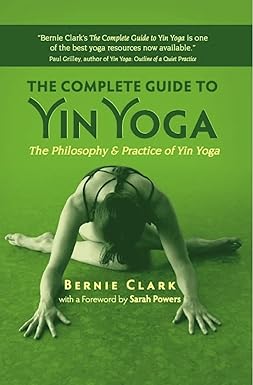[Yin Yoga] Basic Movements of Yin Yoga: Understanding the Difference Between Vinyasa Yoga and Yin Yoga
I. What is Flow Yoga
Flow yoga, originating and established in Europe and America after yoga spread to the West, is a blend of Hatha Yoga and Ashtanga Yoga. Its practice style and difficulty fall in between the two, focusing on stretch, strength, flexibility, endurance, balance, and concentration. The connection between asanas gives a sense of coherence, earning it the name “flow yoga.” Vinyasa Yoga emphasizes the harmony of movement and breathing, with each movement intended to linger for an extended time for a deeper appreciation of the body’s sensations.
The Complete Guide to Yin Yoga: The Philosophy and Practice of Yin Yoga Paperback, Check Price >>>
Vinyasa Yoga, a hybrid of Hatha Yoga and Ashtanga Yoga, involves fluent movements resembling flowing water to strengthen the body. It concentrates on comprehensive exercise, combining stretching, strength, flexibility, endurance, and concentration, ensuring each core posture seamlessly transitions into connecting postures. It is suitable for healthy individuals, those aiming for weight loss and detoxification, and those with over six months of Hatha yoga experience. However, it’s not recommended for individuals with health issues, offering suitable adjustments for those with mild autism and attention concerns.
II. Difference Between Vinyasa Yoga and Yin Yoga
Vinyasa Yoga and Yin Yoga represent movement and stillness, respectively. In essence:
- Different practice forms
- Different breathing techniques
- Different body positions
- Different ideologies
- Different curriculum arrangements
Yin Yoga
Yin Yoga integrates yoga practice with medical principles, drawing from Chinese Taoism and martial arts. It emphasizes full-body relaxation, clearing distractions, and incorporating slow, natural breathing. This approach involves maintaining extended postures, relaxing muscles, exercising bones and connective tissues in a state of complete muscle relaxation, regulating the nervous system, and enhancing endurance, leading to the unity of body and mind.
While peaceful and slow, Yin Yoga follows the principles of Yin and Yang, with stillness in movement and movement in stillness. It can be compared to Tai Chi in Chinese martial arts. Suitable for individuals of all ages, it is both challenging and calming.
III. Exercise Principles of Yin Yoga
- Hold poses for an extended time.
- Relax muscles.
- Complement yin and yang.
- Emphasize more Hatha yoga asanas and fewer Yin yoga asanas.
- Consider exercise time and seasonal ambient temperature.
- Keep the spine curved in forward bend positions.
- Place the lower half of the body on yin and the upper half on yang.
IV. Basic Essentials of Yin Yoga
- Forward bends are feminine movements.
- Backbends are positive movements.
- Practice more masculine movements in the morning or during the cold season.
- Practice more feminine movements at night or in a warm environment.
- The more masculine the practice, the more varied the movements; the more feminine, the more monotonous.
- Prioritize breathing and meditation in Yin Yoga.
Yin Yoga primarily targets stretching the connecting tissues, fostering slow and slender breathing, internal focus, and endurance building. It emphasizes deep muscle stretching and muscle relaxation, requiring practitioners to stay in each posture for an extended duration, often 3-10 minutes.
V. Basic Movements of Yin Yoga
Seiza:
- Sit with hips on heels, stimulating ankles.
- Tighten the abdomen with a naturally straightened spine.
- Palms face up on thighs, close eyes, and breathe for 1 minute.
Half Stirrup:
- Lie on the back, gently hold one leg, extending it sideways with the knee bent.
- Keep shoulders off the ground, breathing evenly.
- Do 5-10 reps on each leg.
Dragon:
- Front leg bent, back leg straight, calf and instep on the ground.
- Keep upper body relaxed with hands on front knee.
- Do 5-10 times on each side for 1 minute each.
Dragonfly:
- Sit on the ground, open legs to the side, lean forward slightly.
- Stretch inner thighs while maintaining comfort.
Cradle:
- Lie on the back with knees bent, hands wrapped around knees, pulling toward the chest.
- Hips off the ground, waist on the ground.
- Hold for 1 minute, relax, and repeat 3-5 times.

